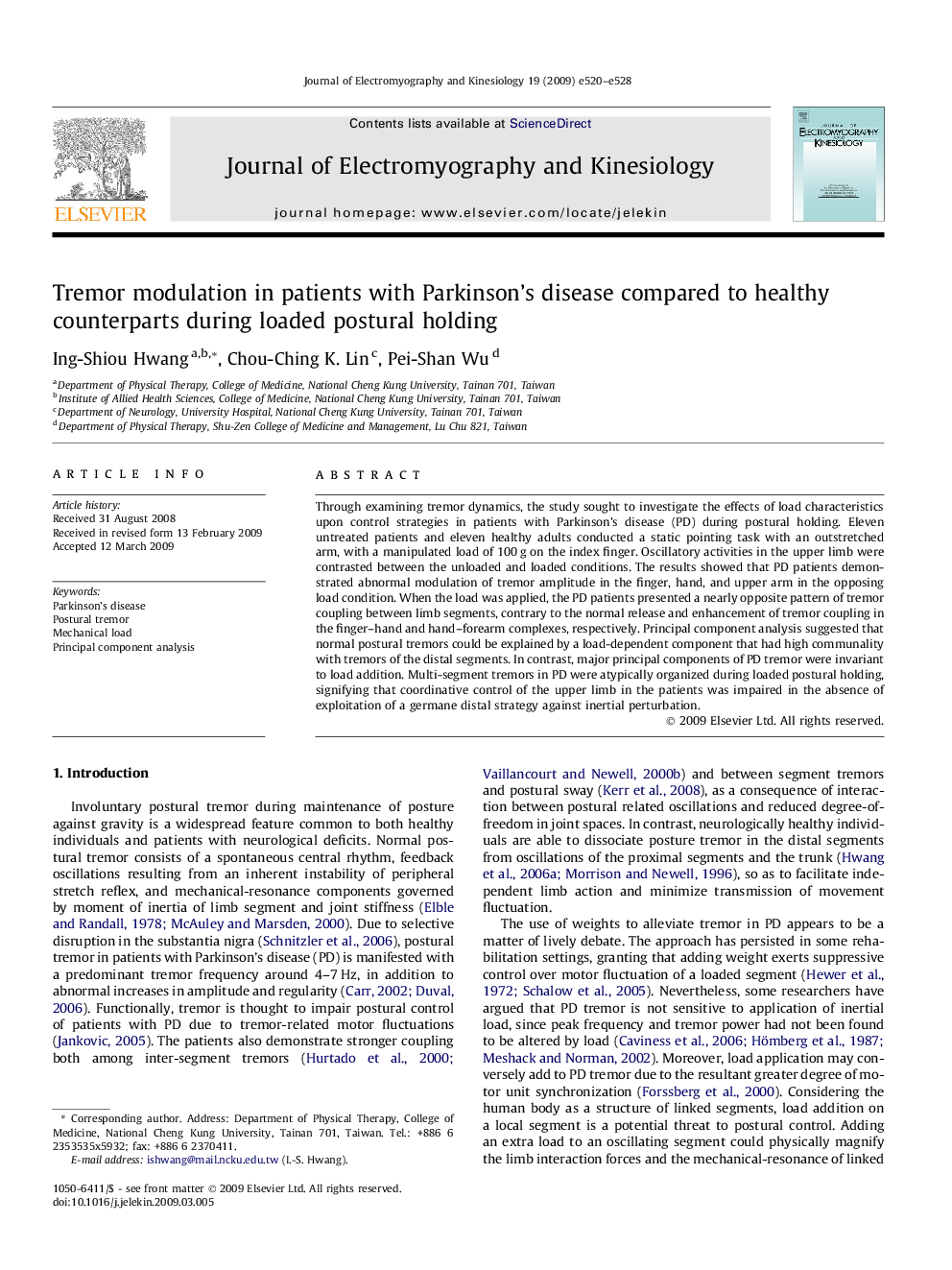| Article ID | Journal | Published Year | Pages | File Type |
|---|---|---|---|---|
| 4065434 | Journal of Electromyography and Kinesiology | 2009 | 9 Pages |
Through examining tremor dynamics, the study sought to investigate the effects of load characteristics upon control strategies in patients with Parkinson’s disease (PD) during postural holding. Eleven untreated patients and eleven healthy adults conducted a static pointing task with an outstretched arm, with a manipulated load of 100 g on the index finger. Oscillatory activities in the upper limb were contrasted between the unloaded and loaded conditions. The results showed that PD patients demonstrated abnormal modulation of tremor amplitude in the finger, hand, and upper arm in the opposing load condition. When the load was applied, the PD patients presented a nearly opposite pattern of tremor coupling between limb segments, contrary to the normal release and enhancement of tremor coupling in the finger–hand and hand–forearm complexes, respectively. Principal component analysis suggested that normal postural tremors could be explained by a load-dependent component that had high communality with tremors of the distal segments. In contrast, major principal components of PD tremor were invariant to load addition. Multi-segment tremors in PD were atypically organized during loaded postural holding, signifying that coordinative control of the upper limb in the patients was impaired in the absence of exploitation of a germane distal strategy against inertial perturbation.
